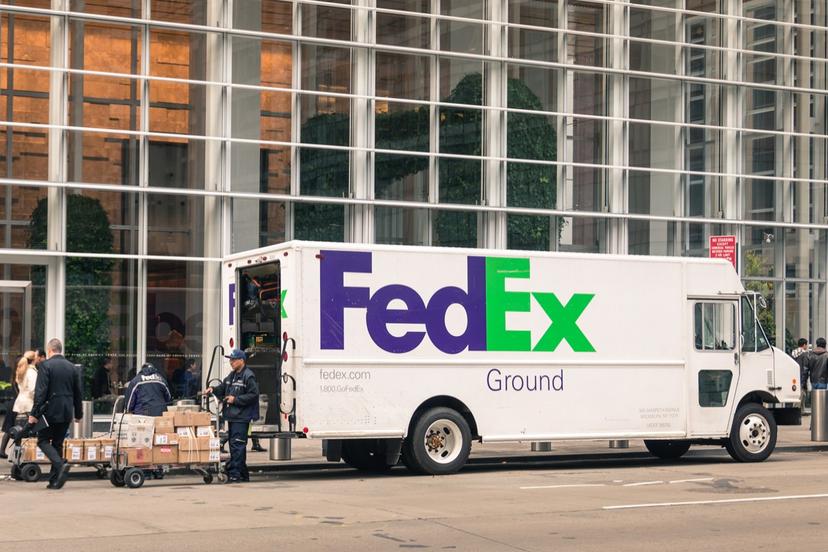Letter and Package Delivery

Background
Mail service has existed in the United States since 1639, when a tavern owned by Richard Fairbanks in Boston was selected by the Massachusetts General Court as the first official repository for colonial mail brought to and from overseas. In time, mail service was authorized by other colonies, but dramatic improvements eventually were made by Benjamin Franklin, who was deputy postmaster general of the colonies under the British from 1753 to 1774. As the 13 original colonies joined to oppose British rule in 1775, the Continental Congress formed its own postal system and appointed Franklin the first postmaster general of the united colonies. In 1789, the Post Office was continued when the U.S. Constitution was written, with Samuel Osgood as the first postmaster general. It became an executive department in 1872.
As the country grew, mail service expanded dramatically. The number of post offices climbed from just 75 in 1789 to a peak of nearly 77,000 in 1901. In 1847, the year postage stamps were first authorized in the United States, the Post Office handled only about six pieces of mail per year for each person in the United States. In 2018, the Post Office processed and delivered 146.4 billion pieces of mail.
Over the years, mail has been delivered using the most sophisticated means of transportation available. Railways were used to transport mail in the early 1830s. For a short time in the 1860s, relays of riders on horseback, called the Pony Express, delivered mail between Missouri and California. The automobile carried the mail as early as 1896, long before many Americans had seen the newfangled invention. And in May 1918, less than 15 years after Orville and Wilbur Wright launched the world's first powered flying machine at Kitty Hawk, North Carolina, the Post Office Department had established regular airmail service between Washington, D.C., and New York City.
As the volume of mail skyrocketed after World War II, the Post Office Department began searching for new ways to process and deliver mail more efficiently to offset growing postal deficits. In the 1950s, postal officials initiated research into mechanized and automated mail-processing machines. Mechanized postal equipment can cull, cancel, and sort mail at a reasonably rapid rate, but these machines are fairly labor intensive compared with automation. Mechanization was deployed in the late 1950s and is still used in post offices today. Automation uses more sophisticated, computer-driven machines operated by only a few people. Automated equipment was tested in the 1960s and 1970s, and was used regularly in post offices beginning in 1983.
One breakthrough in the efficiency of mail processing was the inauguration of the zip code (Zoning Improvement Plan) in 1963, an extension of the one- and two-digit zone numbers first used during World War II. Before the zip code, each envelope or package had to be read as many as 10 different times before final delivery. Use of the zip code eliminated many of the readings, reduced the chances of human error, and eventually formed the basis for processing mail using mechanized and automated equipment.
In 1978, the Postal Service began developing plans for an expanded zip code. Implemented in 1983, this system, called zip + 4, adds four digits to the end of existing zip codes. Zip + 4 applies primarily to business mailers and works by providing the potential for automated sorting to each block of a street and to office buildings and companies receiving large volumes of mail. Today, zip codes can be as long as 11 digits, for example, 10026-4576-98.
In 1988, the Postal Service set a goal that a bar code (a series of vertical lines similar to universal product codes) would be placed on virtually all letter mail by 1995. Today, digital imaging and optical character recognition (OCR) sorting machines are used to handle this task. Much of the bulk mail that makes its way through the postal system already has a bar code, so that mail is routed directly to the machines that read the bar codes. Mail that doesn't have a preprinted bar code but does have a typed or printed address is sent to a mail sorting machine that uses a camera to take a picture of the typed addresses so that the computer can interpret the image and cause the correct bar code to be printed on the mail.
In the future, the post office hopes to use OCR equipment that can read handwritten addresses so that those letters without printed addresses can be read and bar coded the same way. For now, if the sorting machine cannot read the address because it is handwritten, a Silicon Graphics computer uses more sophisticated methods to devise the image. If successful, the bar code is placed on the mail, if not successful, the mail is sent to a postal worker who reads the address and types it into the system. The mail is sent back through the sorting machines so that the correct bar code can be applied.
The biggest segment of private post competition is in the overnight and package delivery business, with the two major competitors to the U.S. Postal Service being FedEx and United Parcel Service (UPS). Both companies have developed systems for same-day, overnight, and two-day package and document delivery. Other, smaller companies, such as DHL, also provide overnight and package delivery services to the United States and abroad. The Postal Service also faces competition from e-mail, faxing, and delivery via the Web of items such as catalogs and advertisements that once traveled through the mail.